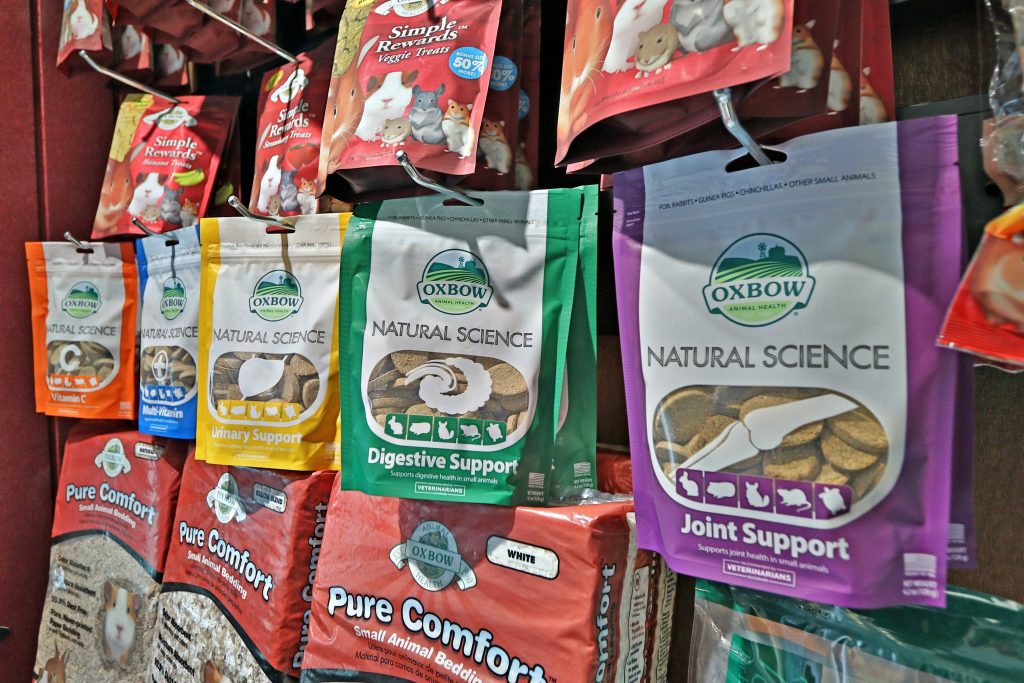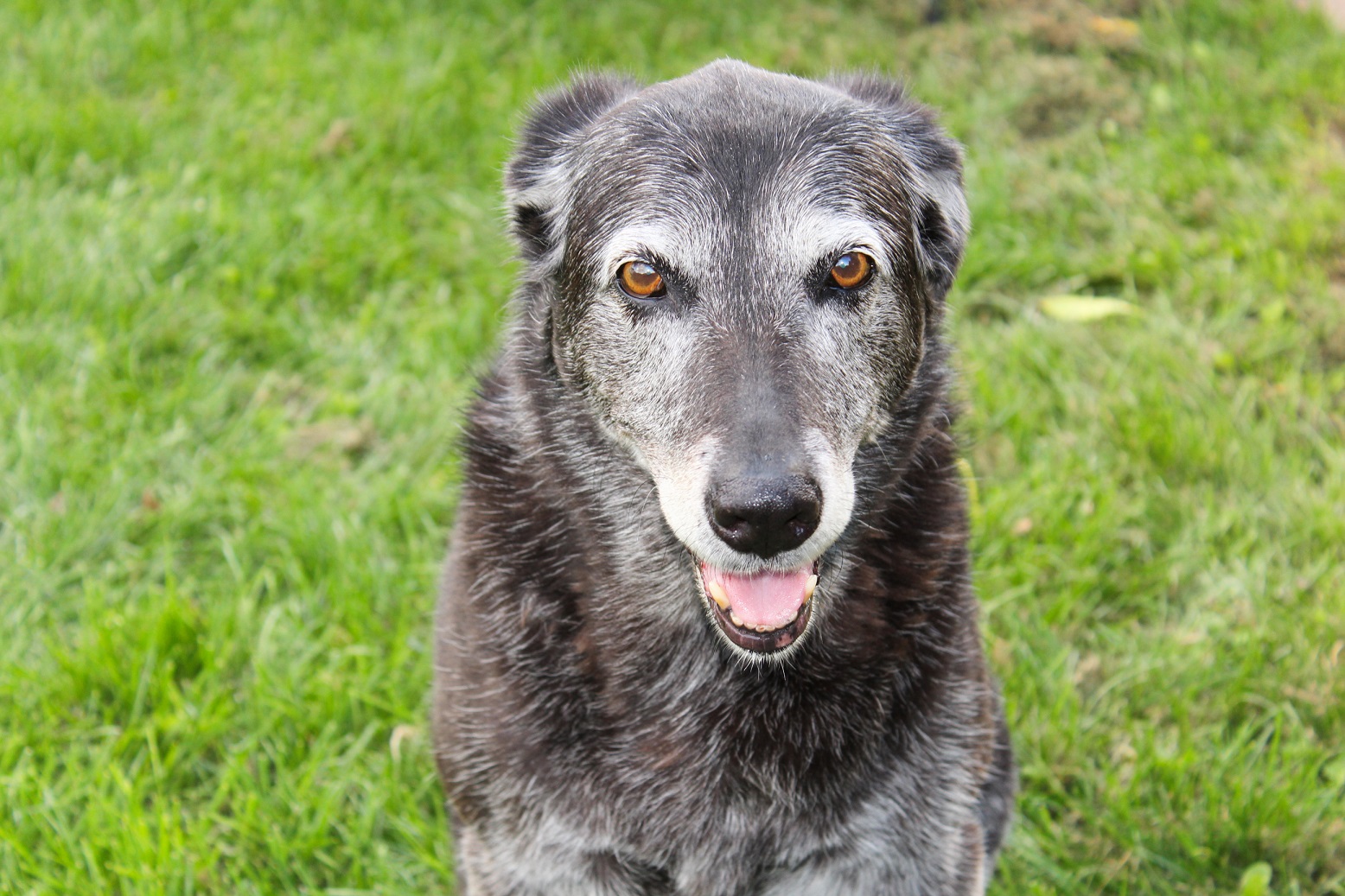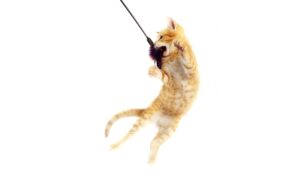Retailers Can Enable Pets to Age Well
Alexandra Wepner //November 21, 2018//
The golden years: a cause for celebration, but maybe a bit of concern, too. A pet’s senior life stage brings with it many questions for compassionate pet owners: How old is “senior,” really? And what can pet owners do to increase their elderly companions’ quality of life? What changes can pet owners expect to see in their furry, feathered or scaled friends as they grow older? The answers to some of these questions may surprise you!
The Signs of Aging
“Typically, when it’s an aged pet, [the owners] want to know what we consider ‘senior,’” said Dawn Lamson, an employee at One of the Family Pet Supply in Middlesex, New Jersey. “[They want to know] what age is senior and when [should] they start taking appropriate actions for bones, hips, diet and teeth?”
Laurie Hess, DVM, Diplomate ABVP, is the owner and medical director at the Veterinary Center for Birds and Exotics in Bedford Hills, New York. Her professional opinion is clear: the term “senior pet” is a bit too convenient of a catch-all phrase. In reality, the point at which a pet becomes “aged” actually varies across species and also depends on an animal’s physical characteristics—for example, a dog’s size.
“It’s so different, even in dogs,” Dr. Hess said. “A larger 6-year-old dog might be more aged than a small 6-year-old dog. From the [exotic] species I treat, it’s so much harder because a canary might live five or six years and a macaw might live 50 [years]… so I guess the most important message is to find a veterinarian who is very comfortable treating whatever species you have, so that the person really knows what to start looking for and at what ages.”
As Dr. Hess points out, it can be hard for the untrained eye to spot symptoms of aging or even illness, so keeping frequent vet appointments is key. She mentions a few cases in which owners brought in ailing animals only to realize that the pets had been sick for years.
And as for what to expect as a pet ages, the symptoms aren’t all that different from what you’d expect in elderly humans. Dr. Hess mentions arthritis in small animals and issues related to kidney disease and high cholesterol in birds as some specific examples. More generally, energy levels, mobility, appetites, muscle mass and weight are all likely to change—though Dr. Hess explains that these could also be signs of illness and encourages pet owners to consult their vets.
Preventative Care
All in all, it seems the key to keeping pets healthy as they age is to begin taking their health seriously long before aging begins. Just as in humans, it is essential that pets have frequent check-ups and live on nutritionally balanced diets with plenty of physical and mental stimulation.
Luckily, there’s plenty of products on the market designed to help owners get their pets out and about. From Petique, a women-owned brand based in Ontario, California, there’s a range of travel and mobility products to choose from, including the 5-in-1 Pet Stroller, or the All-Terrain Pet Jogger for those who like to work out with their pets. The latter even has an optional Bike Adapter.
Once you’ve reached your destination, it’s important to consider older pets’ comfort while hanging out. Gen7Pets’ Cool-Air Cot is portable, durable, and comfortable. It raises dogs off muddy, hot or wet surfaces and also protects them from bugs. Plus, owners can feel free to leave it outside, as it’s made with all-weather material and powder-coated steel framing to prevent rust.
For pets facing more serious mobility issues, Walkin’ Pets by HandicappedPets.com offers a slew of solutions, from braces and support wraps to diapers and wheelchairs. One highlight of the company’s collection is the Mini Dog Wheelchair, which fits toy dog breeds but can be used by cats, rabbits, puppies, piglets and other very small animals.
And speaking of small animals, let’s not forget the needs of our cage-dwelling critters. For more exotic species, Dr. Hess encourages pet owners to be more deliberate in making sure their pets engage in plenty of exercise for mind and body.
“All animals need to have mental stimulation and, unfortunately for a lot of exotic pets—unlike a cat or a dog— [they] don’t come out of a cage very often and get to interact with the environment and get to be very social,” Dr. Hess said. “For some species—again, like birds—because they’re so incredibly smart, they need that mental stimulation… They can even leave their cages, [and that] is very exciting for them to do.”
Better Food, Better Life
As for nutritional balance, there’s the age-old saying: you are what you eat.
“That’s definitely true in people and it’s definitely true in animals as well,” Dr. Hess said. “Guinea pigs can survive a long time without getting vitamin C, but we know over time their joints are going to change; they’re going to get signs of what we’d call scurvy in a person, [or] cartilage changes and arthritis.
“Birds need vitamin A, and without vitamin A they get changes in their kidneys and gout in addition to a whole host of other things if they’re not getting proper nutrition,” she continued. “Even reptiles need calcium in their diet, and if they’re not getting calcium… they start to get metabolic bone disease and their bones start to break down… that’s a really common thing in some lizard species.”
According to the “Know Your Pet” blog on the VCA Hospitals website, cats are obligate carnivores, though they “may eat other foods offered to them, especially animal products like cheese and bone marrow or sweet, sugary substances…” Cats also require servings of “essential fatty acids, minerals and vitamins (especially calcium, vitamin A and nacin).”
Dogs have become “well adapted to high-meat diets,” according to the blog, though the piece also contends canines have evolved to make better use of non- meat foods. The American Society for the Prevention of Cruelty to Animals (ASPCA) website lists water, proteins, fats, carbohydrates, vitamins and minerals as essential parts of the canine diet.
Annamaet’s Re-Juvenate is a senior-specific, grain-free formula that contains wild-caught silver carp as a protein source and coconut oil, a rich source of medium chain triglycerides (MCTs), for their anti-aging properties. In addition, the Annamaet Grain-Free Lean recipe for dogs might be of interest to owners of elderly pets.
“Obesity is the number one health problem in dogs today and, as they age, this malady increases in numbers,” said Robert Downey, president and CEO of the company. “…[The Lean formula] has all the attributes of a weight control diet (high protein, low fat, additional L-Carnitine and Omega-3 fatty acids) without all of the fiber.”
In her store, Lamson champions a raw food diet for cats and dogs. Taking cats as an example, Dr. Hess does not recommend feeding only raw meat to pets, stating it’s best to feed a “balanced diet that’s meat-based but [that is] fortified.” For years, the debate over the merits of raw diets has only intensified and is expected to continue as ideas surrounding pet nutrition continue to change.
Senior-Specific Solutions
Once a pet owner is fully educated on the needs of their aging pet, they’re going to look for ways to meet those needs.
The Gray Muzzle line from Ark Naturals, the full launch for which took place in 2014, is perhaps one of the best- known senior-specific collections on the pet market. It includes feline and canine products for oral care, hips and joints, heart health, cognitive health, and skin and coats.
“I think consumers really want to see a high quality of life for their pets in general,” said Michael Stoeckle, president and CEO of Ark Naturals. “Our goal is to provide the consumer with products that allow them to be in control of their pet’s health from tooth to tail, and give them a high quality of life from puppy/ kitten all the way through their senior years.”
Specifically made for senior parrots, Lafeber’s Senior Bird Nutri-Berries parrot food is formulated with plums, dates, cranberries, milk thistle, dandelion, ginger, chondroitin and glucosamine to address the many ailments that older birds can experience, from inflammation to high blood pressure.
“With 61 percent of the Senior Berries comprised of pellets, 26 percent as whole grains and 13 percent fruits and herbs, the reduced caloric needs of senior birds are met while also providing the nutrition and foraging fun still so important for your bird’s continued good health and enjoyment,” explained Deb Bellot, who works in Sales at Lafeber.
As a matter of fact, Dr. Hess recommends pelleted diets, in general, no matter the age of the bird.
“People still feed lots of seed and we know seeds have no vitamin A in them at all, and they’re lacking protein and a lot of key nutrients,” she said. “They’re mostly just fat. And just like you can live on McDonald’s for a long period of time, because you’re getting calories, you’re slowly suffering nutritional deficiencies and they’ll catch up with you.”
Many companies, such as Vitakraft Sunseed and Kaytee, make pellet and seed mixes for a range of bird types; the latter brand also produces an extruded bird food, called exact. While ZuPreem also offers a mixed pellet and seed diet, called Smart Selects, the vast majority of the lines under its Essential Nutrition category are pelleted diets in several recipes and for birds of varying sizes.
“There’s a lot of research showing that many of the pelleted diets for reptiles are really important, too, because they’re providing a balanced nutrition,” Dr. Hess continued. “That’s actually a relatively new line of thought; most of my career as a vet [we thought], ‘Oh, just feed a bunch of vegetables and whatever it is that they eat in the wild. But unfortunately, they’re not eating the same vegetables or bugs that they would be eating in the wild, so a base diet of pellets is important.”
Mazuri, Zoo Med, Zilla and Fluker’s are just a few companies that produce pelleted diets for reptiles. Repashy Specialty Pet Products makes gel food premixes and meal replacement powders for many reptilian species. Most reptile diet manufacturers, including Zoo Med, Zilla, Fluker’s and Repashy also offer calcium supplements, which Dr. Hess mentions as essential to the health of many reptile pets.
 For some small animals, Dr. Hess emphasizes the health benefits of Vitamin C. Foods made by Kaytee and Supreme Petfoods are fortified with vitamin C, but another option is to administer the nutrient via supplement. Oxbow’s Naural Science line offers a Vitamin C tab, as well as other supplements to support a range of bodily functions in small animals, including digestive, urinary, joints, skin and coat, oral health and general health needs.
For some small animals, Dr. Hess emphasizes the health benefits of Vitamin C. Foods made by Kaytee and Supreme Petfoods are fortified with vitamin C, but another option is to administer the nutrient via supplement. Oxbow’s Naural Science line offers a Vitamin C tab, as well as other supplements to support a range of bodily functions in small animals, including digestive, urinary, joints, skin and coat, oral health and general health needs.
Lamson, who says she sometimes services exotic species but deals overwhelmingly with cats and dogs, offers a host of products that might benefit aging animals. She notes that many of the nutritional ingredients that are good for aging pets can also be given to pets before they enter “senior” territory, but it’s important to know the correct amount to administer.
“[We offer] all kinds of things [for senior pets], right down from their food to additives such as glucosamine, chondroitin, and particular products like Cosequin salmon oils,” she said. “On the holistic side would be green lipped mussel and anything else like cartilage, esophagus or trachea. Again, green tripe is always great [to add to the diet] because as dogs age, their digestive enzymes decrease.”
She goes on to name goat’s milk, fermented fish stocks and bone broths as a few other items she’d recommend. The Honest Kitchen, Answers, and Primal are some brands that come to the retailer’s mind for such products. She also points out how much the pain management segment within senior pet care has expanded greatly in recent time.
“It is now widely becoming part of it, especially with CBD on the forefront of what is going on—because we are now able to handle our animals’ pain in a natural, holistic way,” she said, naming Treatibles as one brand in particular that she’s used with her own elderly dogs, for whom she says the product made a huge difference in their quality of life.
Pet Releaf, based in Littleton, Colorado, makes a range of hemp oils, treats and topical products for dogs and cats. According to Chelsea Gennings, vice president of Business Development & Special Products at Pet Releaf, CBD is “able to help with a range of ailments at once, so all of [Pet Releaf’s] products are beneficial for senior companions.
“Pet Releaf Certified USDA Organic full spectrum hemp oil products give pet parents of senior companions a 100 percent natural solution to help prevent the early onset of these issues but also a supplement that can aid already existing symptoms without the long term effects that are often associated with traditional pharmaceuticals,” she added.
Angela Ardolino, founder of CBD DOG Health, says she made it her mis sion to educate others on the benefits of natural medicine after learning about and experiencing them herself.
“I have a degree from the University of Vermont School of Medicine in Cannabis Medicine and have over 20 years’ experience working with animals,” Ardolino explained. “I partnered with Dr. Ashok Patel, an expert in essential oils and a biochemist, to create the most effective hemp and CBD tinctures and products specifically for pets.”
CBD DOG Health offers topical salves and oils for pets, some addressing specific conditions like anxiety, skin issues, bug bites and more.
A Retailer’s Role
As is typical of independent pet retailers, Lamson is passionate about her role in keeping pets healthy throughout their lives and into old age. She feels it is a retailer’s responsibility to offer guidance to pet owners, and makes it a point to stay informed.
“Read and read and read,” she said. “Know the basic science of how an animal works: the pH balance in their stomachs, how short their digestive tracts are, how important it is for them to absorb nutrients quickly.”
In addition, Dr. Hess acknowledges the importance of communication between pet professionals, specifically veterinarians and retailers. She has reached out to local pet stores in the past, even if they don’t sell live animals (though many of the animals she treats come from local pet stores). She believes veterinarians and pet store owners can work in partnership.
“I basically say, you know, if the animal’s alive longer—you’re selling them the products [and] I keep them alive and healthy—we both benefit and so does the animal,” she said. “It’s really just about educating the owner. It’s really important for veterinarians to keep updating the stores about the latest and the greatest information and what the products are that are changing.”



















